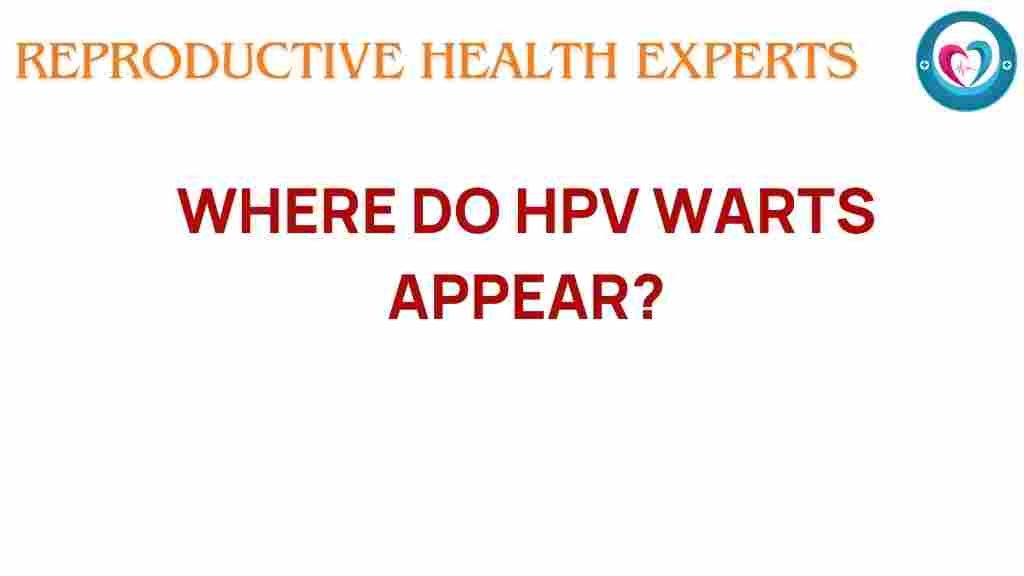Unraveling the Mystery: Where Do HPV Warts Appear?
Human Papillomavirus (HPV) is one of the most common sexually transmitted infections, affecting millions of individuals worldwide. While numerous strains exist, certain types can lead to the development of warts on various parts of the body. Understanding where HPV warts appear is essential for awareness, prevention, and treatment. In this article, we will explore the symptoms, locations, prevention methods, and treatment options for HPV warts, equipping you with the knowledge to take charge of your health.
What Are HPV Warts?
HPV warts, also known as plantar warts, flat warts, or genital warts, are benign growths caused by specific strains of the HPV virus. They can appear on different areas of the body, depending on the strain of the virus. While most warts are harmless, they can be uncomfortable and unsightly, leading to concerns about health and self-esteem.
Symptoms of HPV Warts
Symptoms of HPV warts can vary depending on the location and type of wart. Common symptoms include:
- Small, flesh-colored or gray growths on the skin
- Rough or bumpy texture
- Flat warts that may appear in clusters
- Genital warts that may be raised or flat and can appear in various shapes
- Pain or discomfort in the case of plantar warts located on the soles of the feet
It’s important to note that many individuals with HPV may not exhibit any symptoms at all, which is why awareness is vital for early detection and treatment.
Common Locations of HPV Warts
HPV warts can appear in various locations on the body. Here are the most common sites:
- Genital Area: Genital warts are among the most prevalent types of HPV warts. They can develop on the vulva, vagina, cervix, penis, scrotum, and around the anus.
- Hands: Common warts often appear on the fingers, palms, and backs of the hands.
- Feet: Plantar warts can develop on the soles of the feet, causing discomfort when walking.
- Face: Flat warts may appear on the face, especially in children and adolescents.
Each type of wart is associated with different HPV strains, making it crucial to identify the type for appropriate treatment.
Prevention of HPV Warts
While there is no surefire way to prevent HPV infection, several measures can significantly reduce the risk of developing HPV warts:
- HPV Vaccination: The HPV vaccine can protect against the most common and high-risk strains of the virus.
- Safe Sex Practices: Using condoms and dental dams can lower the risk of HPV transmission.
- Avoiding Skin-to-Skin Contact: HPV is transmitted through direct contact, so avoiding intimate contact with someone who has visible warts is essential.
- Maintaining Good Hygiene: Keeping the skin clean and dry can help prevent wart formation, especially in moist areas.
- Regular Health Check-Ups: Regular screenings can help detect any changes in your health, including the presence of HPV.
Raising awareness about HPV and its transmission is crucial in helping individuals make informed decisions about their sexual health.
Treatment Options for HPV Warts
If you discover HPV warts, various treatment options are available. It’s essential to consult a healthcare professional for an accurate diagnosis and personalized treatment plan. Here are some common treatments:
- Topical Treatments: Over-the-counter solutions containing salicylic acid can help remove warts by peeling away the infected skin.
- Cryotherapy: This involves freezing the wart with liquid nitrogen, causing it to fall off eventually.
- Electrosurgery: A healthcare provider may use electrical current to burn off the wart.
- Laser Treatment: For stubborn warts, laser therapy can effectively destroy the wart’s tissue.
- Surgical Removal: In some cases, warts may need to be surgically excised by a healthcare professional.
While treatment can effectively remove warts, it’s important to note that they may recur due to the underlying HPV infection. Therefore, continual monitoring and maintaining good health practices are vital.
Step-by-Step Process for Managing HPV Warts
If you suspect you have HPV warts, follow this step-by-step process to manage the situation:
- Self-Examination: Regularly check your skin for any unusual growths or changes, especially in high-risk areas.
- Consult a Healthcare Provider: If you notice any wart-like growths, schedule an appointment with a healthcare professional for evaluation and advice.
- Discuss Treatment Options: Work with your healthcare provider to determine the best treatment plan for your specific situation.
- Follow Treatment Guidelines: Adhere to the prescribed treatment regimen and attend follow-up appointments as necessary.
- Practice Prevention: Continue to implement preventive measures to reduce the risk of future warts and HPV transmission.
Troubleshooting Tips for HPV Warts
Managing HPV warts can be challenging. Here are some troubleshooting tips to help you navigate common issues:
- Persistent Warts: If warts do not respond to over-the-counter treatments, consult your healthcare provider for more aggressive treatment options.
- Skin Irritation: If topical treatments cause irritation, discontinue use and seek advice from a professional.
- Emotional Support: Dealing with warts can affect self-esteem. Consider speaking to a counselor or joining support groups to share experiences.
- Stay Informed: Keep up-to-date with the latest research and information about HPV and warts to empower yourself and others.
Conclusion
Understanding where HPV warts appear, their symptoms, prevention methods, and treatment options is essential for maintaining good health. By raising awareness and taking proactive steps, you can manage the risk of HPV and its associated warts effectively. Remember, early detection and treatment can significantly improve outcomes, so stay vigilant about your skin health. For more information on HPV and its implications, visit CDC HPV Information.
By prioritizing your health and discussing any concerns with a healthcare provider, you can take charge of your well-being and minimize the impact of HPV on your life.
For an in-depth exploration of HPV and skin health, check out our resource on HPV Awareness and Education.
This article is in the category Conditions and created by ReproductiveHealthExperts Team
